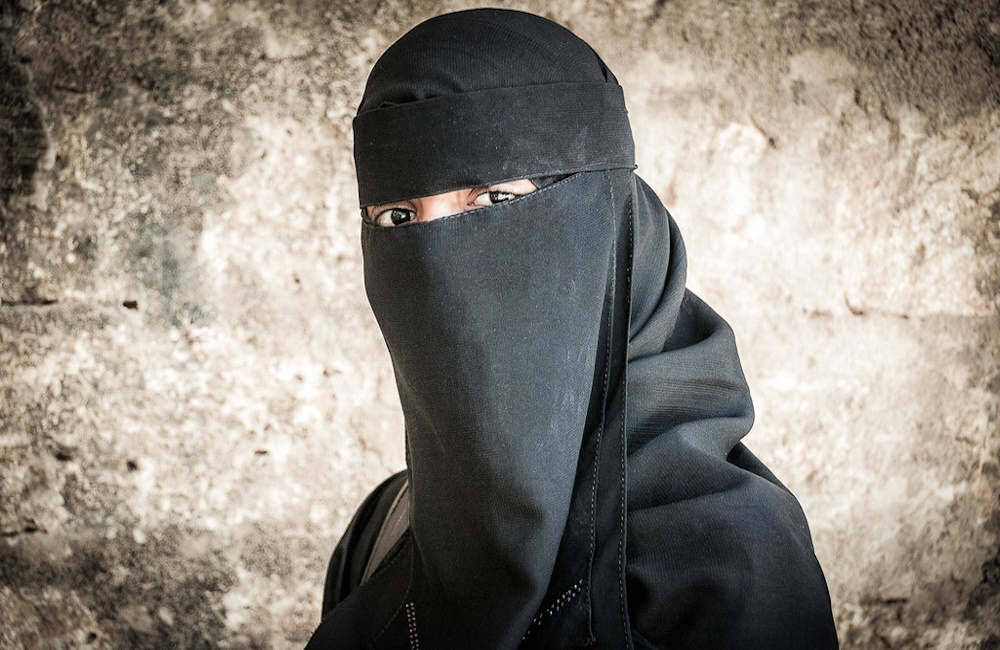What the Quran Says
In Islam, the hijab and niqab hold profound significance, symbolizing modesty and virtue for Muslim women. Their importance is underscored by various verses from the Quran, which emphasize the values of modesty, respect, and piety.
The Quranic perspective on the Hijab can be found in Surah An-Nur (24:31), where Allah instructs believing women to dress modestly:
“And tell the believing women to lower their gaze and guard their private parts and not to reveal their adornment except that which ordinarily appears thereof. And to wrap [a portion of] their headcovers over their chests and not reveal their adornment except to their husbands, their fathers, their husbands’ fathers, their sons, their husbands’ sons, their brothers, their brothers’ sons, their sisters’ sons, their women, or those their right hands possess, or those male attendants having no physical desire, or children who are not yet aware of the private aspects of women.”
This verse highlights the importance of covering and the need for women to maintain their modesty and virtue in the presence of those outside their immediate family.
While the Niqab is not explicitly mentioned in the Quran, its practice is derived from the general principles of modesty outlined in the holy text. The concept of the niqab aligns with the broader Quranic guidance on modesty and privacy. A verse from Surah Al-Ahzab (33:59) suggests a more extensive covering:
“O Prophet, tell your wives and your daughters and the women of the believers to draw their cloaks [veils] over themselves. That is more suitable that they will be known [as modest] and not annoyed. And ever is Allah Forgiving and Merciful.”
The niqab, as an extension of this guidance, reflects the same values of modesty and piety, aligning with the Quranic ideal of women being recognized for their virtue and adherence to Islamic principles.
Both hijab and niqab reflect the values of modesty and virtue deeply rooted in Islamic teachings. By adhering to these practices, women not only obey the divine instructions, but also uphold the principles of dignity and respect, according to the teachings of theQuran.
The Real Origins of Hijab and Niqab: Insights from Sahih al-Bukhari
The origins of the hijab and niqab in Islamic tradition are often thought to be closely tied to concepts of modesty, piety, and virtue. However, a closer examination of historical texts reveals a different perspective. According to Sahih al-Bukhari, the development of these practices was influenced by specific circumstances and interactions during the Prophet Muhammad’s time, rather than solely by theological considerations of modesty.
Sahih al-Bukhari 146 provides a detailed account of how the practice of veiling originated. Narrated by Aisha, the text describes how the wives of the Prophet used to go to Al-Manasi, a large open area near Baqi in Medina, at night to answer the call of nature. Umar ibn al-Khattab suggested to the Prophet that his wives should be veiled to avoid any potential recognition. Despite this suggestion, the Prophet did not immediately act on it. The situation changed one night when Sauda bint Zama, a tall wife of the Prophet, was recognized by Umar during her visit to the area. Umar expressed his hope that this would lead to the revelation of veiling verses. This interaction ultimately resulted in the revelation of the verses on hijab, which mandated complete body coverage except for the eyes and hands.
“The wives of the Prophet used to go to Al-Manasi, a large open area near Baqi in Medina, at night to relieve themselves. Umar ibn al-Khattab suggested to the Prophet that his wives should be veiled, but the Prophet did not implement this. One night, Sauda bint Zama, a tall wife of the Prophet, went out during the Isha prayer time. Umar recognized her and remarked, ‘I have recognized you, O Sauda,’ hoping that this would prompt the revelation of verses about veiling. Consequently, Allah revealed the verses of ‘Al-Hijab,’ which prescribe a complete body cover excluding the eyes.”
Conclusion
In summary, the historical account from Sahih al-Bukhari reveals that the practice of hijab and niqab originated from specific social and contextual factors rather than purely theological principles of modesty and virtue. The interaction between the Prophet Muhammad and his companions highlights how the practice evolved in response to particular circumstances, demonstrating that its origins are deeply rooted in the social dynamics of early Islamic society. This perspective provides a nuanced understanding of the hijab and niqab beyond their commonly perceived religious connotations.
